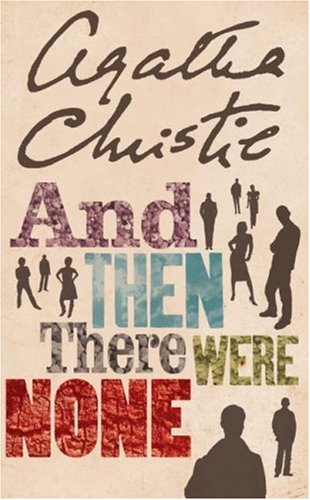All Nonfiction
- Bullying
- Books
- Academic
- Author Interviews
- Celebrity interviews
- College Articles
- College Essays
- Educator of the Year
- Heroes
- Interviews
- Memoir
- Personal Experience
- Sports
- Travel & Culture
All Opinions
- Bullying
- Current Events / Politics
- Discrimination
- Drugs / Alcohol / Smoking
- Entertainment / Celebrities
- Environment
- Love / Relationships
- Movies / Music / TV
- Pop Culture / Trends
- School / College
- Social Issues / Civics
- Spirituality / Religion
- Sports / Hobbies
All Hot Topics
- Bullying
- Community Service
- Environment
- Health
- Letters to the Editor
- Pride & Prejudice
- What Matters
- Back
Summer Guide
- Program Links
- Program Reviews
- Back
College Guide
- College Links
- College Reviews
- College Essays
- College Articles
- Back
And Then There Were None by Agatha Christie
Christie shatters stereotypes. In the novel And Then There Were None Vera Claythorne is depicted as an irrational and hysterical female, yet at the same time the author shows us that this woman is also intelligent, strong and resourceful. In 1939 when Agatha Christie wrote this novel women were considered weak, not critical thinkers, and unbalanced. This is a generalization and Christie knew it. As a female writer she tapped into this stereotype and painted a complex character, Vera, who had these stereotypical traits and strength, intelligence and resourcefulness.
Philip Lombard is a symbol of sexism. When the men were sitting around discussing possible suspects Lombard’s narrow-mindedness is revealed: “Lombard said: ‘At any rate, I suppose you’ll leave the women out of it.’” (page 133) Vera feels his prejudice when she says: “‘He’s just seeing me as a—as a specimen…’” (page 134) This is how Christie sets the stage to shatter the stereotype of sexism.
Vera’s reason and self-reliance is shown throughout the novel. Her insight connecting the poem to the murders occurs after Anthony Marston’s death when she notices the poem on the mantelpiece:
“Ten little Indian boys went out to dine;
One choked his little self and then there were nine.
She thought to herself: ‘It’s horrible—just like us this evening…’” (page 76) After getting to know her, Lombard recognizes her intellect when he says: “‘You strike me as being one of the sanest and most levelheaded girls I’ve come across. I’d stake my reputation on your sanity.’” (page 147) Later on, in the same conversation, he again credits her with brains: “‘What risk was there? He’s the only person here with medical knowledge. He can swear the body’s been dead at least an hour and who’s to contradict him?’ Philip looked at her thoughtfully. ‘You know,’ he said, ‘that’s a clever idea of yours…’” (page 149) An important instance that show’s Vera’s strength and resourcefulness is when she grabs Lombard’s gun and shoots him.
Christie shows Vera’s sanity slipping after a hallucination: “Vera screamed. She screamed and screamed—screams of the utmost terror—wild and desperate cries for help…. She was conscious only of supreme terror.” (page 191) Vera’s reaction shows the reader she is an example of madness and paranoia. Towards the end of the novel, after being through everything, she thought that she was the last person on the island, and she had a choice to live or to die. She chose death, a decision of madness: She goes upstairs to her bedroom thinking of her lover, Hugo Hamilton, and finds a noose and a chair waiting for her. She has the strangest impression that Hugo had set this up for her; this was what Hugo had wanted. She thought: “Hugo, upstairs waiting for her…” (page 235) she climbs on the chair, fastens the noose and kicks the chair away.
Though Vera’s life ends in tragedy, Christie shows us a different side of Vera Claythorne, a side that shows she had survived—in her own way.
Similar Articles
JOIN THE DISCUSSION
This article has 1 comment.


1 article 0 photos 18 comments